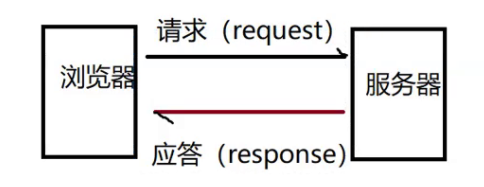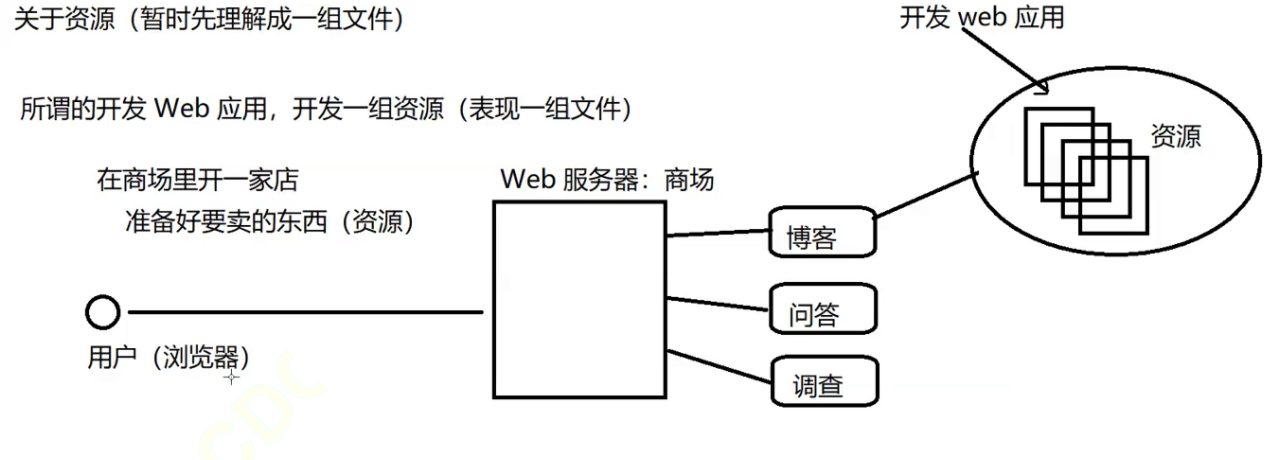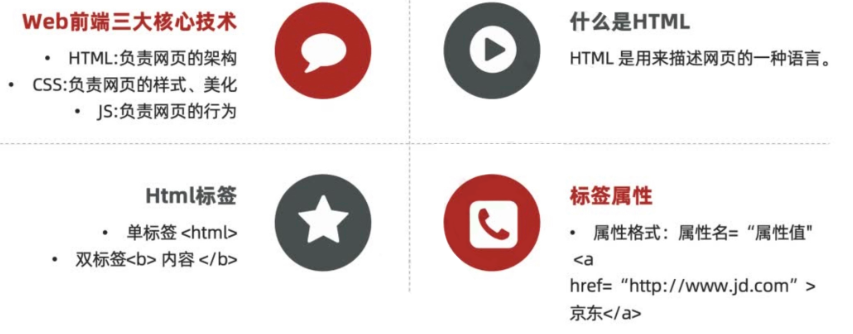1. What is the Web?
Common ones on the Web are websites and web pages, which come in three common forms: hypertext, hypermedia, and hypertext transfer protocol. Web development is website development. A website is composed of many web pages, and web pages are composed of lines of tag codes and data codes. Web development is the process of writing these codes into tags that the browser can understand, and after the browser accepts them, ordinary people can see them.
The Web front-end is mainly responsible for the display effect of the front-end browser. When the Web front-end page is displayed, dynamic data is required. These data are provided by the background Java program or C++ program. This system architecture is called a B/S structure system (B: Browser, S: Server)
1. Introduction to web related terms
(1) www is the abbreviation of world wide web, which we call the global wide area network, also known as the World Wide Web;
(2) The web is a global, dynamic, cross-platform distributed graphical information system based on the http protocol. Our most common one is website service
(3) A website is a collection of multiple web pages;
(4) A web page is an html file that is displayed through a browser and contains pictures, text, links, sounds, etc.;
(5) The web page is parsed and displayed on the browser;
2. Web application
The so-called Web applications specifically refer to some applications that we usually open with a browser, that is, websites. Such as Weibo, Moments, Zhihu, etc. Web applications must exist in the form of "resource groups".
Take Weibo, a web application, as an example. It consists of many scenarios. The scenarios we are familiar with include:
(1) Login and registration scenario;
(2) Weibo browsing scene;
(3) Publish Weibo scenes;
(4) Personal center page;
In these scenarios, each scene generally has its own main page, which is usually an HTML page resource; in these scenarios, there are specific functional areas. Generally speaking, after the scene is determined, there are only one or two functional areas. To realize a function, it turns into completing a series of actions, such as registration, login, and browsing. To complete an action, several resources need to cooperate with each other to complete it. HTML is just a display of content digitization. The data in the resources is in our The learning phase mainly comes from the database.
We first get the data through the database, and then mark the obtained resources as structured content through HTML to form a complete resource. Several resources are combined to form a function. Several functions are spliced and organized to form a complete resource. Forming a complete Web application or system.
3. Web server
If there is a client, there must be a server. Because the Web server uses the HTTP protocol, we often call it an HTTP server (HTTP Sever). For example: Apache, Tomcat, Netty, etc.
Our browser will communicate with our client through the network. Both the browser and the client are implemented by others. Our task is mainly to implement some plug-in materials (also called resources) for the client. Therefore, the server passes When the client accesses, it actually accesses the resources we provide, as shown in the figure.

There is a set of standards for communication between browsers and servers. This set of standards is called the HTTP protocol, whose full name is (Hyper (Super) Text (Text) Transfer (Transmission) Protocol (Protocol)). During communication, the browser sends a request and the server responds.

4. Resources
For the time being, we can understand resources as a set of files, and the so-called development of Web applications is to develop a set of resources (expressed as a set of files). For a better understanding, you can imagine the browser as a shopping mall, and think of us developing Web applications. Imagine the application is like opening a store in this shopping mall. Before opening the store, we need to prepare the items to be sold, which is equivalent to resources. There can be multiple web applications in a browser, and each web application has a series of resources. The resources we develop need to go through the client to provide external services. The user represents the browser, and the browser is directly connected to the Web server. We will attach the corresponding resources to the Web server, so that our Web application will officially work. Get up.

5. Web standard composition
Composition: It mainly includes three aspects: Structure , Presentation and Behavior .
(1) Structural standards: Structure is used to organize and classify web page elements. We mainly learn HTML. The most important part of a web page
(2) Performance standards: Performance is used to set the layout, color, size and other appearance styles of web page elements, mainly referring to CSS
(3) Behavior standards: Behavior refers to the definition of web page models and the writing of interactions. What we mainly learn is JavasScript (JavaScript is a programming language that belongs to HTML and Web)
Ideally our source code: .HTML .css .js
2. Basic introduction to HTML
1. Basic definition: Hypertext Markup Language, hyper is a hyperlink;
2. The most popular version currently is HTML5.0, and the W3C organization is responsible for formulating the standards for the HTML language;
